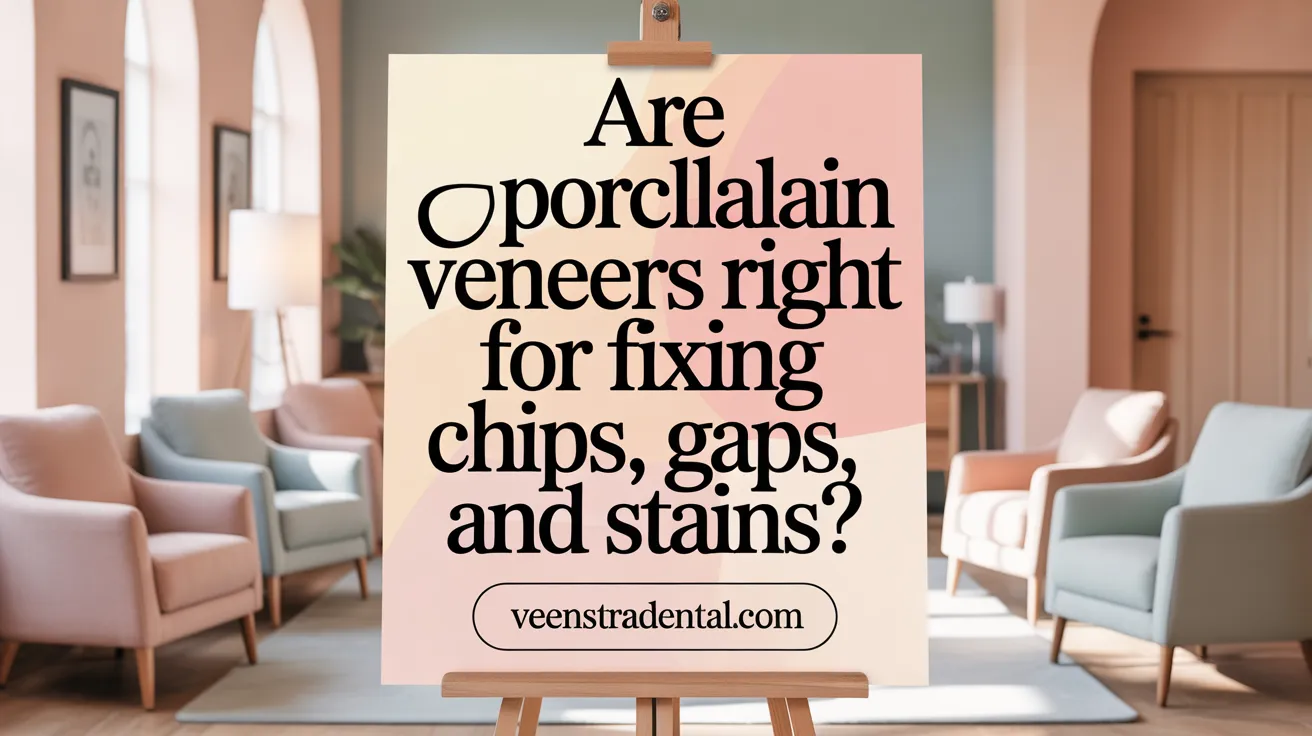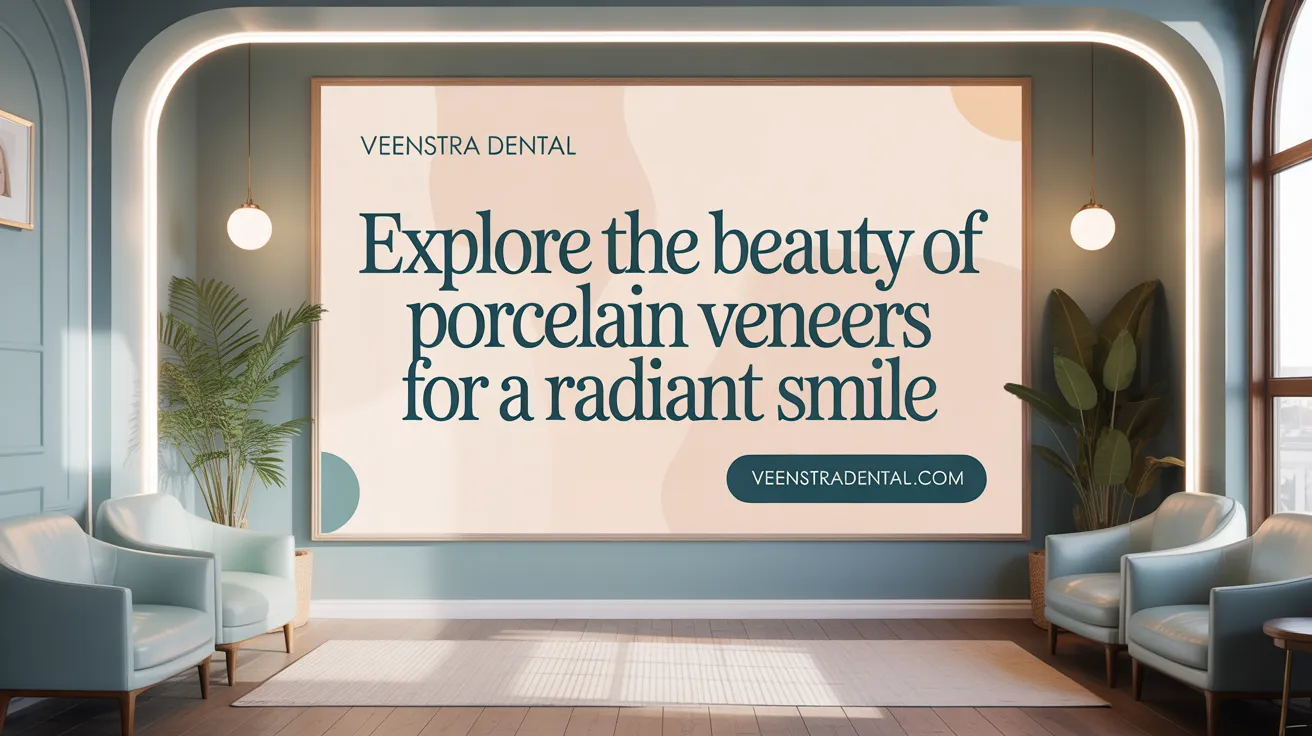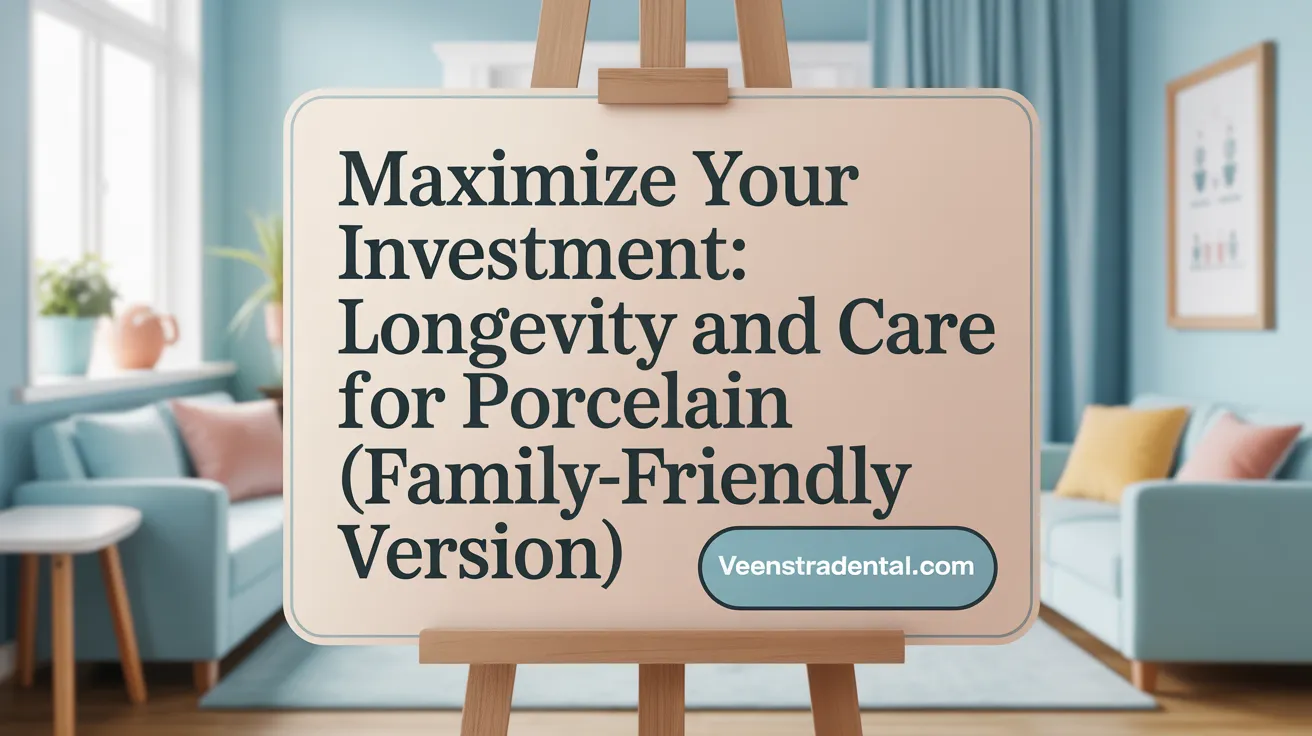Why Consider Porcelain Veneers?
Porcelain veneers have become a popular cosmetic dental solution for individuals seeking to improve the appearance of their smile by addressing imperfections such as chips, gaps, and stains. Designed as thin, custom-made shells that bond to the front surface of teeth, these veneers offer a minimally invasive yet transformative option. This article explores what porcelain veneers are, their benefits, the treatment process, longevity, how they compare to alternatives like dental bonding, and important considerations before choosing this option for dental correction.
Understanding Porcelain Veneers: What They Are and How They Work

What are porcelain veneers and how do they work?
Porcelain veneers are ultra-thin, custom-crafted shells made from durable, tooth-colored ceramic material. These shells are bonded to the front surfaces of teeth to improve their appearance. They effectively conceal issues like discoloration, chips, cracks, small misalignments, or gaps, resulting in a more attractive and natural-looking smile.
The application process begins with a dental consultation to assess suitability. Next, a small amount of enamel is carefully removed from the front of the teeth to ensure the veneers will fit seamlessly without adding bulk. Precise impressions are then taken to create custom veneers that match the desired shape and shade.
Once fabricated, the veneers undergo a bonding procedure where the tooth surface is etched to enhance adhesion. Dental cement is applied, and the veneers are carefully positioned and secured. Often, a curing light is used to harden the cement quickly, resulting in a durable bond.
Porcelain veneers mimic the natural translucency and appearance of real teeth. They are resistant to staining from foods and beverages, maintaining their bright white look over many years. With proper oral hygiene and routine dental visits, porcelain veneers can last between 10 to 15 years, making them a long-lasting solution for enhancing smile aesthetics.
In summary, porcelain veneers work by covering imperfections with custom-made shells that bond to the teeth, delivering a natural, durable, and cosmetically pleasing result.
Suitability of Porcelain Veneers for Chips, Gaps, and Stains

Are porcelain veneers suitable for fixing dental issues like chips, gaps, and stains?
Porcelain veneers are an excellent choice for addressing a variety of common dental imperfections. They are custom-made shells that are bonded to the front surfaces of teeth, providing a natural-looking solution to improve the smile's appearance.
Veneers effectively conceal chips, cracks, and small chips by covering the damaged area with a durable, stain-resistant shell. They can also close small gaps between teeth, offering a cosmetic alternative to orthodontic treatment like braces for minor spacing issues.
Stains and discoloration are another primary concern that porcelain veneers can resolve. Made from stain-resistant porcelain, these shells reflect light like natural enamel and can mask stubborn stains from coffee, tea, or aging, often providing a brighter, more uniform smile.
Most people with healthy, stable teeth and gums are suitable candidates for veneers. They can strengthen weakened enamel and improve the overall dental health by sealing gaps that might trap plaque and bacteria.
However, because placing veneers involves removing a thin layer of enamel, it's important to consult with a dental professional to ensure you are a good fit for this procedure. Veneers are a long-lasting, aesthetic solution that can significantly enhance your smile once properly applied.
The Benefits of Porcelain Veneers for Cosmetic Dental Enhancements

What are the benefits of choosing porcelain veneers for cosmetic dental enhancements?
Porcelain veneers offer an array of advantages when it comes to improving the appearance of your smile. One of the most notable features is their natural look. Made from translucent, non-porous porcelain, veneers reflect light like real enamel, providing a lifelike and appealing appearance.
Durability is another significant benefit. When properly cared for, porcelain veneers can last between 10 to 15 years or longer. This makes them a cost-effective, long-term option for those seeking a lasting smile makeover.
Veneers are also highly resistant to staining. Unlike composite resin options, porcelain's non-porous surface prevents discoloration from foods, drinks, and tobacco, ensuring your smile remains bright for years. This stain resistance helps maintain an attractive and consistent smile without the need for frequent whitening treatments.
The procedure itself is minimally invasive. It involves slight removal of enamel—usually just enough to accommodate the veneer—preserving most of the tooth's natural structure. This makes the process comfortable and reversible in rare cases, while setting the stage for a natural-looking, resilient result.
Beyond the technical advantages, porcelain veneers significantly boost confidence. They effectively conceal dental imperfections such as chips, cracks, gaps, and discoloration, enhancing the overall aesthetics and helping you smile with assurance.
In summary, porcelain veneers combine aesthetic appeal with durability, resistance to stains, and a gentle application process. They are an excellent choice for anyone looking to improve their smile's appearance while enjoying a natural, long-lasting, and confident look.
What to Expect: The Process of Getting Porcelain Veneers

Initial consultation and oral health evaluation
The process begins with a dental consultation, where your dentist will assess your overall oral health. They will examine your teeth and gums for cavities, gum disease, or other issues that might need addressing before veneer placement. During this visit, your aesthetic goals are discussed, and the dentist will determine if porcelain veneers are suitable for you.
Tooth preparation and enamel removal
Once deemed a good candidate, the next step involves preparing your teeth. The dentist removes a tiny amount of enamel—usually about 0.3 to 0.5 millimeters—which helps ensure the veneers will fit naturally and not add bulk. Local anesthesia may be used to minimize discomfort during this procedure.
Impression taking and shade selection
After preparation, impressions or digital scans of your teeth are taken. These are sent to a dental lab where your veneers are custom-made to match the color, shape, and size that best complements your smile. During this phase, you also select the shade that blends seamlessly with your natural teeth, often with a shade guide provided by the dentist.
Temporary veneers and custom fabrication
While waiting for the permanent veneers—usually a week or two—temporary covers may be placed to protect your teeth and give you a preview of your future smile. The lab crafts your porcelain veneers based on the specifications, ensuring precise fit and aesthetic appeal.
Bonding procedure and follow-up care
When the custom veneers are ready, the dentist will bond them to your teeth. This process involves applying a special dental adhesive to secure the veneers, which are then cured with a light to harden the bond. Adjustments are made for comfort and a perfect fit. After the procedure, your dentist may schedule a follow-up to check the veneers’ fit and your oral health. Proper oral hygiene—including gentle brushing and flossing—is essential to maintain your new smile and ensure the longevity of your veneers.
Longevity, Maintenance, and Comparison with Alternatives

How long do porcelain veneers last and how resistant are they to staining over time?
Porcelain veneers typically last between 10 to 20 years with proper care and consistent maintenance. Made from durable, non-porous ceramic, they are highly resistant to surface stains caused by foods and beverages like coffee, wine, or dark sauces. Their resistance to staining helps keep the smile bright and natural-looking for many years. However, their longevity depends on factors such as the quality of the porcelain, the skill of the dentist, and patient habits. Regular dental check-ups, gentle brushing, and flossing can help extend their lifespan. Patients are advised to avoid hard or sticky foods and stain-inducing drinks to preserve their appearance. Overall, porcelain veneers are a resilient, long-lasting solution for smile enhancement.
How do porcelain veneers compare to other treatments like dental bonding?
Porcelain veneers excel in durability, stain resistance, and appearance over dental bonding. While veneers typically last 10-20 years, bonding with composite resin may last only 3-10 years. The process for veneers is more involved, requiring tooth preparation, impressions, and laboratory fabrication. They are suitable for correcting discolored, chipped, or misshapen teeth more extensively. Dental bonding is less invasive, quicker, and less costly, often completed in a single visit. However, bonded teeth are more susceptible to staining and may chip or wear sooner. Choosing between them depends on individual needs: veneers for comprehensive, long-term aesthetic improvements; bonding for minor repairs and budget-conscious options.
What factors should be considered before choosing porcelain veneers for dental corrections?
Before opting for porcelain veneers, it’s important to evaluate your overall oral health. Healthy teeth and gums are necessary for successful veneer placement. Consulting an experienced cosmetic dentist helps determine if veneers are suitable, especially for addressing discoloration, minor misalignments, or chips. Patient credentials, previous work, and reviews are valuable when selecting a provider. Understanding the procedure—such as enamel removal, potential risks, costs, and required maintenance—is equally important to set realistic expectations. Logistical considerations like clinic location and comfort with the dentist also play roles in decision-making. Overall, thorough research and professional guidance are essential for achieving satisfactory and lasting results.
| Aspect | Details | Additional Info |
|---|---|---|
| Lifespan | 10-20 years with proper care | Depends on material quality and oral hygiene habits |
| Resistance to stains | High, especially porcelain from non-porous ceramic | Avoid stain-causing foods and drinks |
| Comparison to bonding | Veneers are more durable and longer-lasting | Bonding is quicker, less invasive, lower cost |
| Cost considerations | Generally more expensive than bonding | Cost varies with material and number of teeth treated |
Is Porcelain Veneers the Right Choice for You?
Porcelain veneers offer a compelling option for those seeking to correct chips, gaps, and stains, providing a durable, natural-looking, and stain-resistant solution to enhance your smile and oral health. Understanding the detailed process, benefits, and considerations is essential before deciding. By consulting with an experienced cosmetic dentist and evaluating your oral condition and personal goals, you can determine if porcelain veneers are the ideal path to a brighter, more confident smile. With proper care, porcelain veneers can maintain their beauty and functionality for many years, making them a valuable investment in your dental aesthetics.
References
- What Are Dental Veneers? Cost, Procedure & Advantages
- Porcelain Veneers: A Natural-Looking Upgrade for Chips, ...
- Fixing Gaps, Chips, & Stains: How Porcelain Veneers Can ...
- 3 Things to Consider Before Paying for Porcelain Veneers
- Do Porcelain Veneers Stain?
- Do Veneers Stay White?
- Non-Cosmetic Reasons for Porcelain Veneers
- How Stain Resistant are Porcelain Veneers?
- Lifespan of Porcelain Veneers
